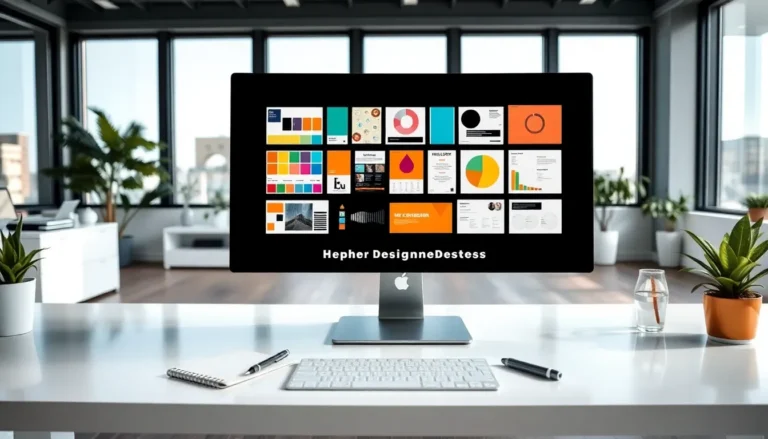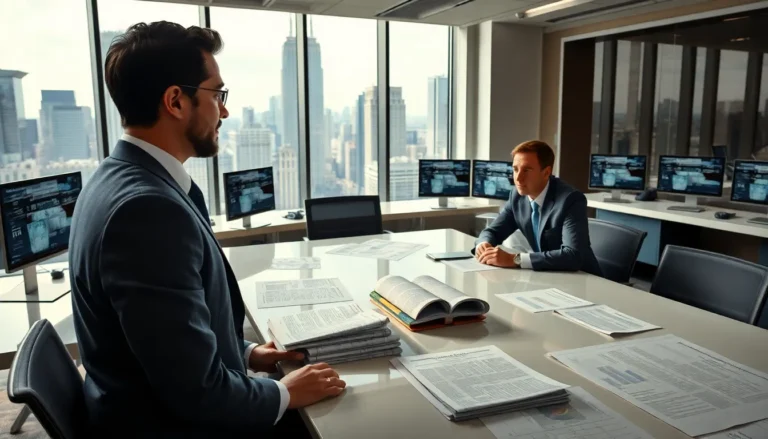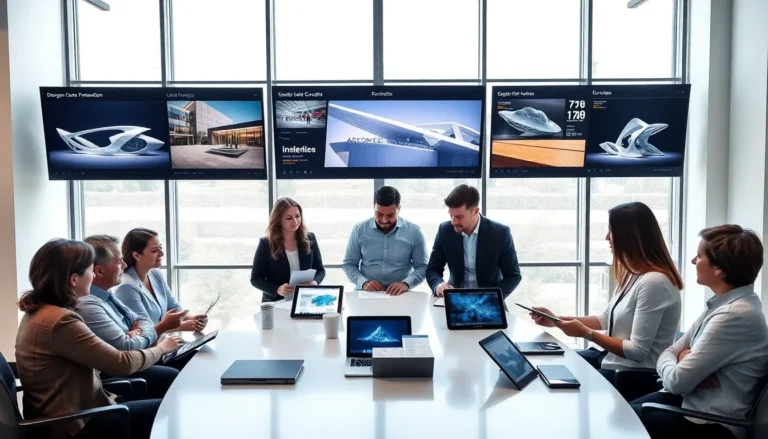Table of Contents
ToggleLet’s face it: the first impression of a website is often made in a matter of seconds. Imagine walking into a coffee shop with a bright neon sign or a drab old wooden sign that looks like it hasn’t been painted since 1975. What draws you in? The same goes for site design. Effective site design can turn casual browsers into loyal customers faster than you can say, “I need more coffee.” In this text, we’ll explore why site design matters, the key principles to consider, and what trends are shaping the future of website creation. Let’s get started, shall we?
Importance Of Site Design

Site design is not just about aesthetics: it serves as the backbone of user engagement and satisfaction. Ignoring it can lead to high bounce rates and missed opportunities. A well-designed site can communicate a brand’s values, draw attention, and guide users toward their goals. Simply put, effective site design can elevate a viewer’s experience, leading to increased conversion rates and customer loyalty. Companies have reported that they can see a significant boost in retention and sales just through thoughtful site design. It’s a way to say, “Hey, look at me. I’m professional and trustworthy.”
Also, in today’s digital age, a site acts like a digital storefront. Much like a physical store, it should be inviting, organized, and operational. If a site looks outdated or is difficult to navigate, users may question whether they can trust the business behind it. Hence, investing in quality site design is not merely an option but a necessity for businesses aiming to thrive online.
Key Principles Of Effective Site Design
There are several fundamental principles of effective site design that can’t be overlooked. First is usability: this concept refers to how easy it is for users to navigate the site. A user-friendly interface ensures that visitors can find what they are looking for without frustration.
Next, consistency is crucial. This means using a uniform color scheme, fonts, and layout throughout the site. Consistency creates a cohesive experience, making it easier for users to recognize your brand.
Visual hierarchy is another key principle that dictates how information is presented. By using varying sizes, colors, and placements, critical information can stand out and grab attention. This makes browsing feel intuitive: users know where to look first.
Also, it’s essential to optimize for speed. A slow-loading site is an instant red flag: users will abandon it faster than a hot potato. Tools for optimizing images, reducing redirects, and using browser caching can help keep site speed fast and user-friendly.
Finally, incorporating elements of trust, such as customer reviews or secure payment icons, can further enhance user confidence. Trust is a key factor in ensuring visitors complete their transactions.
Types Of Site Design Concepts
Site design can take various forms, each playing a role in enhancing user experience.
User Experience And Interaction
User experience (UX) revolves around all the interactions a user has with a site. This includes everything from loading times to how content is arranged. Good UX focuses on making these interactions smooth and enjoyable. Incorporating feedback mechanisms like surveys and ratings can also help a two-way conversation, making users feel valued.
Aesthetic Elements In Site Design
Aesthetics drive engagement more than you might think. Colors, font choices, and imagery contribute significantly to users’ emotional reactions. For example, a vibrant color scheme can evoke excitement, while soft pastels may create a calming experience. Similarly, unique typography can reinforce a brand’s personality, playful, serious, or modern.
Responsive Design Practices
Responsive design practices are essential in today’s multi-device world. Websites must look and function well on various devices, from smartphones to desktops. A responsive site adjusts layout and content based on screen size, ensuring an optimal viewing experience. This not only keeps users happy but also improves SEO ranking.
Sustainable And Accessible Design Considerations
Plus to responsiveness, designers are increasingly considering sustainability and accessibility. Websites that prioritize eco-friendly practices minimize their carbon footprint, while accessible designs ensure everyone, including those with disabilities, can navigate and interact with the site. Using alt texts for images and enabling screen reader compatibility are just a few ways to make a site more inclusive.
Future Trends In Site Design
Looking forward, several trends are poised to shape the future of site design. One significant trend is the rise of immersive experiences, often leveraged through virtual and augmented reality. These technologies can provide engaging and interactive content, making users feel more involved than ever.
Also, AI-driven personalization is making waves. Imagine a site that adjusts its content based on a user’s past behavior or preferences. This level of customization can significantly enhance user experience.
Using minimalistic design is also gaining traction. Simple layouts with ample white space can improve usability, focusing users’ attention on key content. Overall, the future of site design looks promising with a blend of technology and user-centered approaches.







